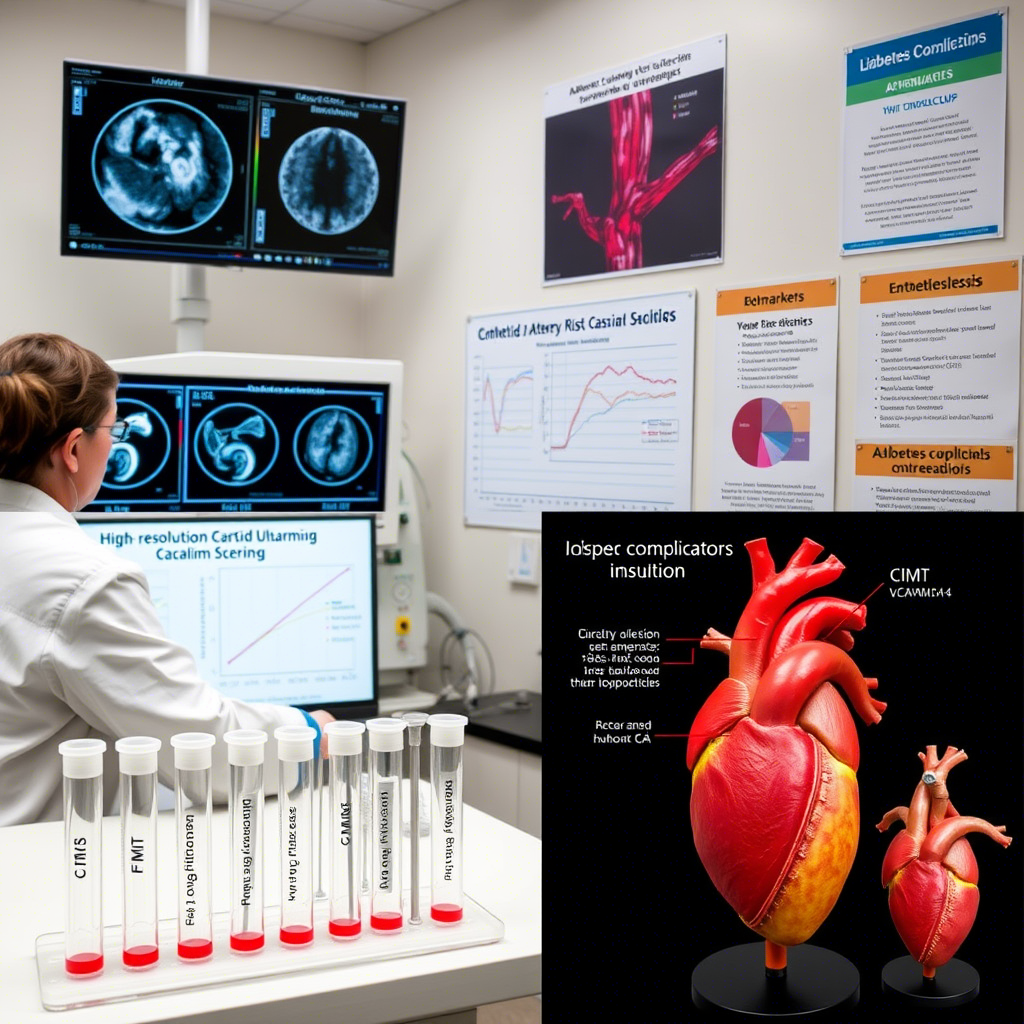The Silent Cascade: Subclinical Atherosclerosis and Early Endothelial Dysfunction in Type 2 Diabetics Without Cardiovascular Symptoms
Louis Dufresne¹, Maëlle Cartel ², Baptiste Moreau³, Olivier Roussel ⁴, Elodie Jobert⁵
Keywords:
type 2 diabetes, subclinical atherosclerosis, endothelial markers, coronary calcium, early diagnosisAbstract
Background: Cardiovascular complications remain the foremost cause of death in type 2 diabetes mellitus (T2DM), often progressing unnoticed until irreversible damage occurs. This study investigates subclinical vascular pathology in asymptomatic diabetic patients through high-resolution imaging and endothelial biomarkers.
Methods: A cross-sectional investigation was performed on 510 asymptomatic T2DM patients aged 40–70 across three academic hospitals in France from 2022 to 2024. Participants underwent carotid intima-media thickness (CIMT) assessment, coronary artery calcium (CAC) scoring, and serum analysis of endothelial dysfunction markers, including asymmetric dimethylarginine (ADMA), vascular cell adhesion molecule-1 (VCAM-1), and circulating endothelial microparticles. Exclusion criteria included prior cardiovascular events or lipid-lowering therapy. Multivariate regression analysis was used to correlate biomarker levels with glycemic control (HbA1c), body mass index (BMI), and diabetes duration.
Results: CAC >100 was identified in 41.7% of participants, while 47.1% had CIMT values exceeding 0.75 mm. ADMA levels were markedly elevated in those with CAC scores above the threshold (mean 0.88 μmol/L vs. 0.57 μmol/L; p < 0.001). VCAM-1 and microparticle concentrations positively correlated with disease duration beyond 8 years (r = 0.52, p = 0.003). Poor glycemic control (HbA1c >8.2%) emerged as an independent predictor of high-risk CAC scores (OR = 2.34, 95% CI: 1.45–3.69, p < 0.01).
Conclusion: Asymptomatic T2DM patients frequently exhibit silent vascular abnormalities detectable through noninvasive tools. Integrating endothelial markers and imaging into routine diabetic care could facilitate the earlier identification of cardiovascular risk and the delivery of targeted interventions.
Downloads





